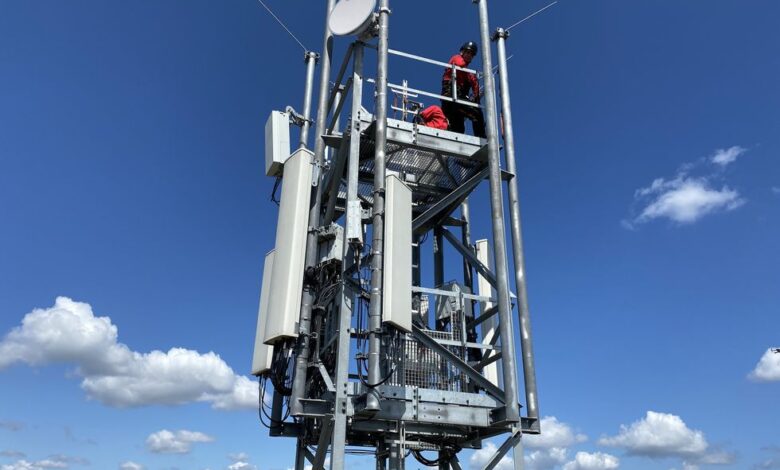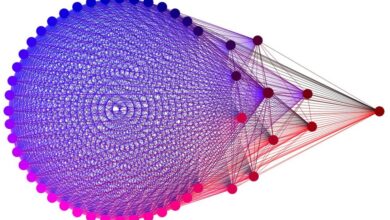5G “Open” Standards Are in Play—Just How Open Are They?

At a June meeting of major cellular-industry stakeholders in Osaka, Japan, a course correction was under discussion that could jeopardize the industry’s quest for open standards. At issue, specifically, was what the telecom industry calls interoperability: The hope from companies operating cellular networks that they won’t be forced into buying network infrastructure from just a handful of big-name vendors like Ericsson and Nokia.
The interoperability struggle has manifested in recent years in a push for what’s called open radio access networks (RAN). The open RAN movement has been trying to deliver easily interchangeable wireless network components—although not always successfully. Perhaps more significantly, open RAN supporters hope to disrupt the wireless industry hierarchy and allow more companies to take more significant roles in network infrastructure.
A RAN is the portion of a cellular network that connects individual devices, like phones, to a central, wired core network. When you think of cell towers, for example, you’re thinking of part of the RAN. Open RAN refers to the idea of making the interfaces between individual RAN components “open”—that is, capable of interacting and communicating with one another, regardless of who made each component. The idea runs contrary to traditional RAN development, in which a vendor like Ericsson, Huawei, or Nokia would build an end-to-end network that would not be able to interface with another vendor’s components.
After initially resisting the Open RAN movement, large vendors are now actively engaged.
The open RAN movement gained steam in 2018 with the formation of the O-RAN Alliance, based in Alfter, Germany. Which is not to say the entire industry was on board immediately. Indeed, the industry was initially divided into two camps by the issue.
The radio access network (RAN) functions as a cellular network middleman, connecting end devices like cell phones to the larger world. Open RAN proponents want the interfaces between RAN components, notably the radio unit (RU), distributed unit (DU), and centralized unit (CU), to be standardized so that components from different companies can be mixed and matched. The most popular division, or “split,” is called 7.2x and prioritizes creating a flexible (hence the “x”) interface called the open fronthaul between the RU and the DU.IEEE Spectrum
On one side were the vendors—such as Ericsson, Huawei, and Nokia—which build the network components and seek to bake in competitive advantage by making their systems incompatible with another vendor’s equipment. On the other side were the network operators—think AT&T, Deutsche Telekom, Orange, or any other company that provides cellular service to consumers—that wanted the opportunity to mix-and-match components and avoid getting locked into one vendor’s ecosystem, even across cellular generations.
There was also a hope expressed by members of the industry that opening up the interfaces between RAN components would allow smaller vendors to enter the market. These vendors would theoretically be able to focus on building one component really well and not have to worry about customers passing them over because of worries about integrating their equipment into an end-to-end system from Ericsson or Nokia.
Open RAN’s progression over the past several years has seemed, at times, both breakneck and stuck in the mud. The O-RAN Alliance, for example, has erupted from just five founding members to well over 300 participants just half a decade later.
Whereas half a dozen “splits”—ways to divvy up RAN components to implement open interfaces—have already been explored across the industry, subsequent developments have zeroed in on a specific split called 7.2x. The O-RAN Alliance states that there are already 101 publicly available open RAN specifications, with more being developed by the organization’s technical groups.
However, progress in other directions has slowed as vendors and operators disagree on what counts as a sufficiently “open” interface. And overall investment in open RAN deployments has fallen: Analysts at Dell’Oro Group recently estimated that revenue from open RAN will account for only 15 percent of the global RAN market by 2027, which is 5 percent less than they had previously projected.
Open RAN’s progression over the past several years has seemed, at times, both breakneck and stuck in the mud.
Open RAN would require new cellular deployments, though, and the entire wireless industry has just finished its monumental, multiyear effort of initial 5G deployments. “Most operators that I’m familiar with in Western Europe and in the U.S. will probably not for the next five to seven years really start massively deploying something else,” says Kim Larsen, a wireless-industry advisor who was previously the chief technology and information officer for T-Mobile in the Netherlands. That kind of timeline aligns with when many network operators will begin thinking about 6G deployments, which is why open RAN may find a larger role in that generation.
Which brings us back to Osaka.
At the June meeting, organization members ultimately agreed on a compromise solution by implementing two interface options called category A and category B, with the categories signifying where a specific process called downlink precoding is handled. Category A keeps things simple, and typically caters to antenna arrays using 8 or fewer antennas. Category B, meanwhile, is more suited for 16 antennas or more, including massive MIMO installations. (Massive MIMO—short for multiple-input, multiple-output—is a type of antenna that integrates smaller sets of 64 or 128 antennas, often, to collectively beam narrow, precise signals directly to specific devices.)
In an email response, the O-RAN Alliance clarified that the inclusion of options is not a unique solution, saying that many specifications include options to meet variations in how the technology is deployed and used. The organization has also launched a work item for an option called uplink performance improvement, or ULPI, that would be another alternative for massive MIMO deployments.
The expectation is that the large vendors—Ericsson, Huawei, Nokia—will just implement both category A and category B options into their RAN interfaces. The benefit is clear: Rather than developing, manufacturing, and selling two varieties of radio units and distributed units with either class A or class B interfaces, they can provide one solution to any network operator’s needs. The trade-off is that, in attempting to create a simpler, open interface, the industry may have ended up with something more complicated than originally intended.
The compromise in Osaka is indicative of the larger trend happening in open RAN’s development: After initially resisting the movement, large vendors are now actively engaged in the process. Regarding the class A/class B agreement, analyst Caroline Gabriel at Analysys Mason wrote, “With the exception of Mavenir, the list of contributors could be related to any traditional RAN standards work.” (Gabriel did not respond to requests for comment).
In an email response, the O-RAN Alliance stated “All supplier contributors are treated equally within O-RAN, and have an equal opportunity to participate and contribute.” The organization also stated that both small and large wireless-industry players are well represented among the organization’s hundreds of members.
Larsen says it’s not accurate to view the industry as entirely recoalescing around the usual vendors. “I don’t think it necessarily means that if you have been a startup or a smaller player that everything is lost,” he says. “I think you probably will see a segmentation. Some, and that might be the bigger, usual people on the block like Nokia, Ericsson, and Samsung, will focus on the big incumbent players. And the smaller startups will focus on private networks, which is a really growing business.”
IEEE Spectrum




